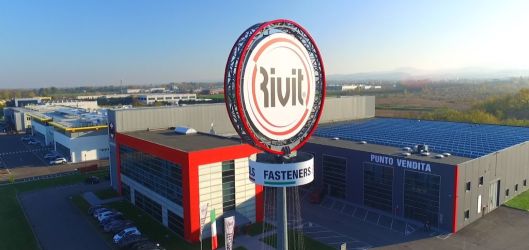
Having access to a reliable stream of batteries that feature the latest technology is one key draw for power tools companies joining the Cordless Alliance System. The alliance makes life easier not just for tool users, but specifically for specialist trades who use specialist power tools. Torque Magazine speaks with Thomas Zeller, head of the CAS partner programme…
The Cordless Alliance System is a powerful battery pack system that allows different power tool brands to use the same batteries. The advantages are numerous but perhaps most crucial of all is that it makes the life of the end user much simpler. The explosion in cordless power tools has also led to a rather less welcome explosion in peripheral accessories, namely various battery chargers, numerous spare batteries, battery carriers… all taking up valuable space and multiplying the potential for confusion – for instance taking the wrong spare battery and charger to a job site.
Being able to use the same battery pack and charger across numerous brands saves time, frustration and space for professionals. And they’re not just any old batteries, either, they come with a pedigree, hailing from Metabo and using battery technology that has been developed over decades.
Thomas Zeller is head of the CAS partner programme, leading the growth of the number of brands using the battery sharing technology. Having also been in the industry for its last battery revolution – the switch to lithium-ion in the early ‘00s – Zeller is steeped in the power tool sector and has remained awed by the pace of change that has continued since those early days. He tells Torque Magazine: “It was amazing to see what was happening over that time, I wouldn’t have imagined that the technology not only on the battery side but also on the tool side is still going forward at such speed.”
And that rate of change is not about to let up, he argues: “There’s a big conversion going on still from corded to cordless, especially tools which are more power demanding like circular saws. There’s still a chunk of products which are between 1,300 Watts up to 1,900 Watts and from the battery perspective are not yet ready to be replaced from the corded tools, but there will be developments on the battery side which will make that possible. The regular batteries will get tougher and more powerful and will open up that range of products which are still to be covered.”
The CAS network
Starting with nine brands in 2018, the CAS network now features 38 tool brands using the same battery. “We have a mailbox on our website where you can contact us and 70% of enquiries are about becoming a member of CAS,” Zeller explains. The screening process covers a lot of areas, he adds: “Some companies are too far from our target groups. Other brands we talk with to see how they fit and what value they could bring to CAS. Then we have to understand the scale of the business… The pipeline for the future is larger than more than we can actually keep up with.” The journey of joining CAS from first contact to completion can take anything from nine months to three years or more.
“It’s a process. I would love it if every brand was using CAS! But the race started many years ago, brands like ours, Makita, Milwaukee… have their own microcosmos. You can connect the tools to a battery system, then the customer understands they don’t need any more batteries – they already have more than enough.
“They see the benefit, because they have less investment, they have less batteries, they use the batteries they have much better. It’s also more environmentally friendly. “But if you stay with a system where there is one brand, you are bound to that company. With CAS, we have companies that are specialised in areas, rather than providing standard tools like drills, saws and so on. The end user has particular needs for pipe installation, for example. Or for a rivet gun. Those special brands for users in special trades… end users want to use that quality tool but they don’t want to buy lots of different batteries which are not compatible. So, it’s better to have a shared platform.
“For CAS end users there is a double freedom. It’s not only that you are freed from the cord, you’re also free to buy from the brand that appeals to you. It’s totally open, it’s a true open platform. The only thing we really care about is that companies coming in have a certain position on the market, that they are well known, that they are good quality or they are innovative not necessarily a big company. But it should be one which is meaningful to the end user, which gives the whole CAS portfolio a certain value so that people understand CAS is for professional people.”
Explaining benefits to end users
There’s certainly a growing emphasis on conveying this message to the end user from within the CAS team.
“What we really do now is make it more visible for the end user,” Zeller elaborates: “When you start building up brands or technologies there’s a ramp up phase. We are already in progress, but there’s still room to the top. You can compare it to the introduction of lithium-ion batteries, which came to the market in the 2000s on a bigger scale. It was fantastic, they didn’t lose their charge, they can be smaller and lighter, with more power…We expect the craftsmen to get it and understand the benefit of this new battery technology after one or two years. But I had interviews with end users five years after its introduction and they said they still have some doubts. Could they really count on this lithium-ion technology? You see what time it takes to get to a level that people really accept and understand it? It’s a massive process.”
Zeller says the pace of battery innovation also works the other way, with companies potentially struggling to adapt: “Companies want to develop their applications, they don’t want to invest into battery technologies every three or four years. So, we take care of that, checking we have the latest available technology on the market for our partners. This frees them up, so they can develop their application and their products, the things they are famous for.”
“That’s the deal. We serve the technology and we take care of the partners on board. And they bring their name to the alliance and help to grow it.”
There are supply chain advantages too: “The other thing is, we have brought 50 million batteries into the market, mostly here in Europe. There’s a big supply chain running, we always have the batteries in place, at the right time and where they are needed. With this stream of batteries, it’s very easy for us to have a share for our partners always available. And this is something that was really a big change for the partners, because they now have the reliability.”
As CAS edges ever closer towards that magical ‘50 brands’ milestone, the team is looking at the bigger picture too. There is an awareness that CAS might sound “like a German thing” – naturally for a project conceived in that country, but its acquisition focus goes out to all countries of Europe, as well as the US, where it already has partners.
“When we talk about how many tools are part of the CAS network, they are not tools that are coming to the market, they are available now, from brands which are really active, they aren’t in development phase.”
Relatable size
Metabo is no small deal in business terms, but it’s also not so large that it is remote from the kind of businesses that are seeking to join CAS. “We’re talking to midsize companies interested in joining CAS. Maybe it’s a company that is owned by the founder… they love to talk to us because they understand that we are we are Metabo people, you can we are typically southern Germany people you can catch up with, on a personal level… we understand how they talk. We talk on the same level and we’re really open. We meet each other once a year in a summit, where we think about direction and we listen to the CAS partners and what are their needs.”
www.cordless-alliance-system.com
This article originally ran in the November-December 2023 issue of Torque Magazine. You can read the full magazine in the Torque Magazine Archive and subscribe for future issues here.



